#la fée morgane
Explore tagged Tumblr posts
Text

Morgane le Fay / Morgane la Fée
Artist : William Henry Margetson
#william henry margetson#w. h. margetson#morgane le fay#morgane la fée#morgane#arthurian legend#arthurian mythology#magic#magie
1K notes
·
View notes
Text
Les fées de la forêt
C'est une histoire d'il y a longtemps, De la forêt de Brocéliande, Où vivaient deux fées de légende : La fée Viviane et la fée Morgane. La fée Viviane et Lancelot Furent du grand lac les deux héros : Elle fit si bien à l'initier Qu'il en devint franc chevalier ! C'est une histoire d'il y a longtemps, De la forêt de Bocéliande, Où vivaient deux fées de légende : La fée Viviane et la fée Morgane. Quand à Morgane, la magicienne, Selon la légende Arthurienne, Des ténèbres elle fut la déesse On la nommait : "l'enchanteresse". C'est une histoire d'il y a longtemps, De la forêt de Brocéliande, Où vivaient deux fées de légende : La fée Viviane et la fée Morgane. Viviane au malheur de Merlin Avait du lier son destin Et Morgane du Val sans retour Fut la gardienne sur haute tour. C'est une histoire d'il y a longtemps, De la forêt de Brocéliane, Où vivaient deux fées de légende : La fée Viviane et la fée Morgane.
Marie Josée HUBERT


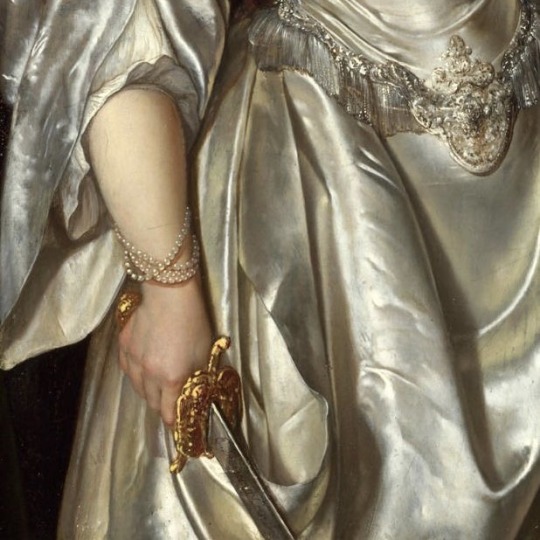
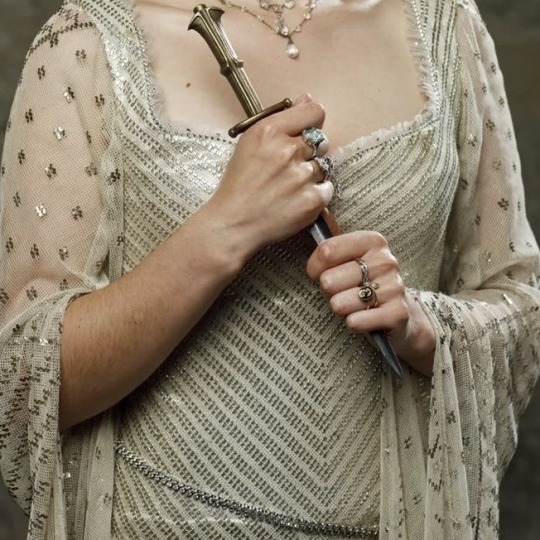
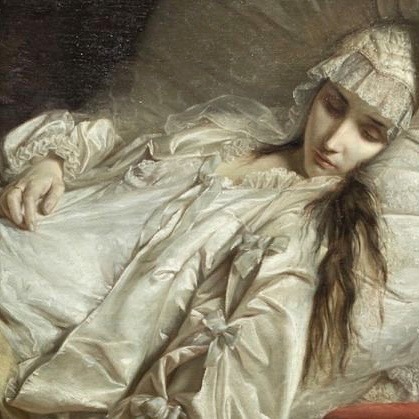



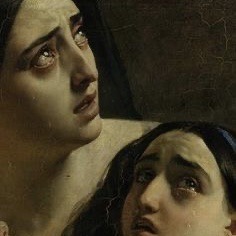
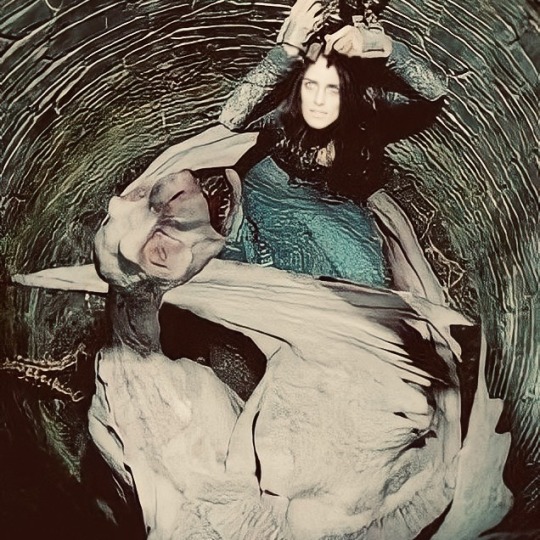
Morgana Pendragon / Pre-Raphaelite Art
394 notes
·
View notes
Text
An example of the book's fascinating studies: as I said before, the chapter about Sleeping Beauty notices how fin-de-siècle authors, when "perverting" the tale, focused on the fairies around the baby's cradle - and Jean de Palacio notices that the names chosen for these fairies are very revealing of this "perversion".
Indeed, some authors in their twist-take on Sleeping Beauty, decided to name the group of fairies around the cradle. Anatole France, in his take on the Sleeping Beauty story in 1909, listed eight fairies: Titania, Mab, Viviane, Mélusine, Urgèle, Anna de Bretagne, Mourgue. Catulle Mendès, in 1888, had evoked in his work a total of 12 fairies - Oriane, Urgande, Urgèle, Alcine, Viviane, Holda, Mélusine, Mélandre, Arie, Mab, Titania, Habonde. Jean Lorrain did this list twice - once in 1883 including Habonde, Viviane, Tiphaine, Oriane, Mélusine, Urgèle, Morgane ; and another in 1897, simply removing Urgèle. As for Joséphin Péladan, he also did a double list: one in 1893, Mélusine, Morgane, Viviane, Mourgue, Alcine ; and another in 1895 to which he removed Mourgue to add Urgèle, Nicneven and Abonde.
These names can be taken as just random famous fairy names - but Jean de Palacio highlights that... They are not just chosen randomly, and all denote a way to discredit the fairies or to highlight their ambiguous if not negative nature. Of the recurring names four are taken from the matter of Britain, Arthurian and medieval legends: Viviane, Melusine, Anna de Bretagne (a variation of Anne of Britanny, an actual queen of France) and Mourgue/Morgane. Famous characters, right... But who is present here, around this baby's cradle to deliver gifts? Morgan le Fay, half-main villain of the Arthuriana half-healer of Avalon. Viviane, the good lady of the lake, oh yes... but also a shameless seductress who used Merlin's lust and love to steal his secrets and get rid of him. And Melusine - a national treasure, one of France's beloved legends... And a snake-woman with a strong demonic aura and devilish reputation. Viviane, Melusine and Morgan are all manifestations of the "femme fatale", of the deadly though seductive woman.
There is also a British influence at work here, since we have Titania and Mab, the two famous Shakespearian fairy queens. But Titania's reputation had already been soiled in Shakespeare's play by her mad love for a donkey - sorry, an ass ; as for Mab, in the minds of fin-de-siècle century, she is still strongly associated with the "materialistic atheism" of Percy Bysshe Shelley's poem "Queen Mab". Not perfect example of "godmothers"...
But let's return to Mourgue/Morgue briefly. Yes, she is the Franco-British Arthurian character of Morgan le Fay... But she is also part of the Italian literary tradition thanks to the Orlando Furioso, where she is Morgana, the incest-born sister of the enchantress Alcina who... Oh look! She is there too! Alcina in French is "Alcine" and in the lists you find... Alcuine. Once again, a new discredit over the fairies, as you have two wicked enchantresses dedicated to the dark art - including a lustful old hag so vain she hides her true appearance under a glamour of youth and beauty.
Of the various fairies presented in this list, only Urgèle seems to be free of any same, flaw or negative side - but that's because she is the most "recent" of them all, and not an old literary heritage or cultural figure, but rather a fresh creation. Urgèle was created by Voltaire in 1764 for a short tale/fairytale of his, "Ce qui plait aux dames", "What pleases the ladies", and immediately taken back for an "opéra-comique" adaptation by Favart in 1764, "La Fée Urgèle, ou Ce qui plaît aux dames". And while Théodore de Banville made her a good fairy victim of a wicked enchanter in his comedy "Le Baiser", "The Kiss" ; it didn't refrain Michel Carré and Paul Collin to make her the wicked fairy of Sleeping Beauty in their theatrical-opera adaptation of the fairytale in 1904...
[As a personal note, if you are interest in the other fairy names, Habonde is a variation of Abonde - la fée Abonde was a figure of popular folklore and superstitious beliefs in medieval France, an embodiment of abundance and prosperity fought off by the Church and who was tied to the rite of leaving "meals for the fairies" on special nights such as Christmas or the Epiphany. Holda is of course the same as Frau Holda/Frau Holle of Germanic mythology ; Arie is a reference to "Tante Arie", a Christmas gift-giver of eastern France, and Nicneven is a variation of Nicnevin/Nicnevan of Scottish folklore. I have to admit I do not know about the origins of Mélandre or Tiphaine.]
#sleeping beauty#fin de siecle fairytales#jean de palacio#fairy godmothers#fairies#famous fairies#fairytales with a twist
38 notes
·
View notes
Text
Arthurian myth: King Arthur (1)
Loose translation of the article "Arthur (Artus)" from Catherine Rager's "Dictionnaire des fées et des peuples invisibles dans l'Occident païen" (Dictionary of fairies and invisible people in the Pagan Occident).
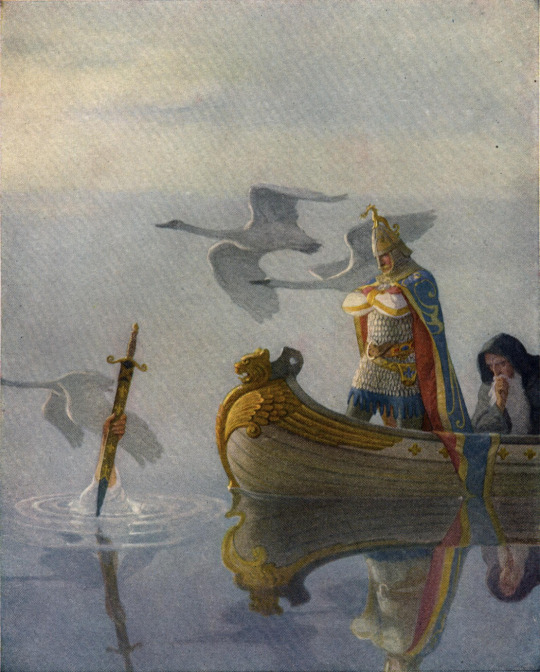
ARTHUR (Artus)
Mythical king of a cycle of romans, the tales of the Round Table, also known as the Matter of Britain, which blossomed throughout all of Europe from the 12th to the 15th centuries. Among those texts, we find numerous romans by Chrétien de Troyes, and The History of the Kings of Britain by Geoffroy of Monmouth, alongside its very loose translation Le Roman de Brut by Wace, itself rewrote by the priest Layamon in his poem Brut, and later, by Malory in his La Mort d'Arthur. Arthur was originally a historical warlord killed around 537 at the battle of Camlann, but he then became a super-human character identified to another Arthur, the great god of the pantheon of the Britons, and thus symbolizing the fight of the old kings of Great-Britain against the Saxon invaders.
The father of Arthur is the king Uter Pendragon who, despite his human appearance, seems to be a figuration of an Underworld king. He claims to be Constantine's descendant - the Celts, during this era, were Romanized. Arthur's half-sister is the fairy Morgane. As for his wife, the incomparable Guenievre ou Guinevere, her name means in its Welsh form (Gwenhwyfar, Gwenhwyvar) "white spirit", "white ghost". Some considered that Guenievre, who is recurringly kidnapped, is a resurgence of the Greek goddess Persephone. Their son, Llacheu, has the gift of second-sight/clearsight, as he knows the secret of material elements and of nature.
The relationships between Arthur and the Otherworld make him a magical character. In the roman of the Saxon Layamon, Brut, we see elves assist to his birth and gift him - he will be powerful, wealthy, generous and have a long life.
As many other heroes, Arthur receives his sword, Excalibur, from a supernatural creature. It is the Lady of the Lake that offers it to him. Indeed, the weapon he took away from its rock had been broken during a previous battle. Merlin, to replace it, brought the king to the shore of a lake, where an arm with white silk came out of the water, offering him the magical sword ornate with dragons - it is Excalibur, the Caladbolg of the Irish Fergus, a sword forged in Avallon. Before his death, the king will task sir Bedevere with bringing back Excalibur to the lake, where the mysterious arm appears again out of the water and takes it back. The Lady of the Lake always offers her protection to the king.
Arthur rides a black horse, a color associated to the realm of the dead: he can, as such, cross the waters that separate the afterlife from the realm of the living without his horse going wild with terror. The Book of Taliesin, a Welsh text of the 13th century, tells how the king went to the Underworld and brought back from it a magical cauldron (prefiguration of the Grail) which offers to knights an endless supply of food, but stays empty for the cowards.

Arthur is a purifying hero who gets rid of the monsters that plague the universe, just like Hercules, Theseus, Finn mac Cumhail or Cûchulainn. His first exploit was to kill the boar Twrch Trwyth which was ravaging Wales (Mabinogion of Kulwch and Olwen).
Once king, Arthur represents a solar-themed strength and wisdom. Advised by Merlin the enchanter, he establishes a rule of peace and justice (for twelve years according to some, for forty according to others), and presides at Carduel the Round Table, whose nature confirms that Arthus is both belonging to the supernatural, and an image of the Sun. His court can be found at Camelot - which might be Cadbury Castle, in the Somerset, but is before all the idealized town, the perfect city, the seat of knowledge, poetry and alchemy. The court keeps moving depending on the tales. The lord regularly sends his knights fight for just causes (and, after the Christianization of the legend, for the quest of the Grail containing the blood of the Christ), but himself rarely appears as a warrior. He sometimes even appears to figure a god of war who is above the mere battle, similarly to the goddess Badb.
For a marvelous life, a prodigious end: in his Vita Merlini, Geoffroy of Monmouth tells how the king, killed by the treacherous Mordred, his nephew and likely incestuous son, is carried on a magical boat by fairies that came from the Atlantic (where the realm of the dead is located). He is accompanied there by the Lady of the Lake and by three queens: the queen of Northern Wales, the queen of the Terre Gaste, and Morgane. Healed of his wounds by the latter, he stays with her, the Lady of the Lake, and their six sister-fairies, in the island of Avallon, "The Isle of Apples", which is sometimes a name for the Sidh/realm of the fairies, sometimes synonymous with the Blessed Islands or Fortune Isles. In Layamon's Brut, it is elves that take to Avallon the dead king, and it is the elf-queen Argante that brings him back to life. In truth, he returned to the place he belongs to, this Otherworld where there is no death, no suffering, no decadence, but only youth, feast and joy. His people hope for his messianic return, either in times of war, or simply so that he can offer them wise advice. In Cornwall, king Arthur supposedly appears in the shape of a black bird with red-colored beak and claws.
Old texts from which Rabelais took his inspiration mixed together the legend of king Arthur and the one of the giant Gargantua.
In Guillaume Apollinaire's burlesque "Arthur roi passé roi futur" (Arthur, king past, king future, 1914), king Arthur returns, wearing a shining armor, to Buckingham Palace where Georges IX is ruling. After having tested the authenticity of the ghost, Georges IX abdicates and lets the throne return to the old lord of England.
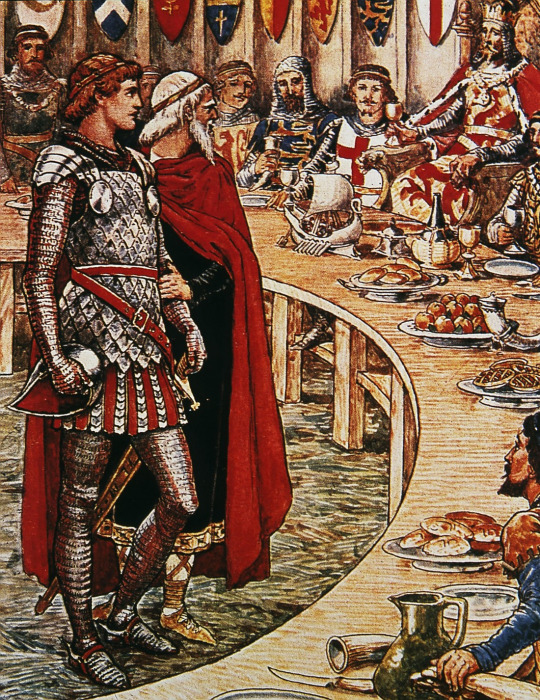
18 notes
·
View notes
Text
Who Are You in the Arthurian Legend?

Morgan la Fée
You are...
Anticipatory; you can guess the next action a person will take and do what is necessary to prevent it if you feel the need to. Balanced; you try to keep a neutral opinion and a healthy lifestyle, even if it doesn't work very well. Able; you are very good in some cases and very bad in others, and you make the most of those high capacities. Studious; you love to learn! Cunning; you can create impressive plans to achieve your ends. You probably quickly change your mind if someone has better arguments than you.
Tagging: @peoplcshope @crimsontwins @acoldsovereign @ahogedetective @tetsuwan-atom @countarganan @etherealguard @liecoris @pearlcure @d-ensetsu @codedred @artificeheart @infintasmal @crownlcsking @fctedivided @archivisim
10 notes
·
View notes
Note
Hi! I'm writing a story and I was wondering what would be a legit French name for a school of magic?
Thanks for your question, anon!
Of course it all depends on the vibe of your story, but a generally safe structure for a legit-sounding French school of magic might look something like this:
(Famous witch/wizard's)(school)(of(type of magic))
for example:
L'école de sorcellerie de la fée Morgane—Morgana's School of Sorcery L'Institut d'enchantement de Cassandre—Cassandra's Institute of Enchantments L'Académie de la magie de Merlin—Merlin's Academy of Magic
If you're trying for something more cryptic, you could use:
L'île d'obscurité—The isle of darkness
La tour sacrée—The sacred tower
Here are some additional ideas from long list of magical school names in French on Reddit.
Tip: You should watch out for the articles (le, la, les, l' and des, de, de la, etc.) when creating your name so that it is grammatically correct, and watch out for adjective endings so that they match the noun gender and number of the noun they are describing.
#answered anon#qs#you can also make a wild English name and translate directly or closely in some cases#in that case I would recommend comparing the original names and French translations of well-known magic schools in books and other media#to see how it was rendered#french#romance languages
4 notes
·
View notes
Text

« Ici, la Femme-Étoile révèle qu'elle est celle qui a hérité de l'échiquier de la fée Morgane, un fait qui suggère une certaine correspondance entre ces deux figures. Comme mentionné précédemment, le symbole de l'échiquier englobe sans aucun doute l'idée d'une confrontation des opposés dans un champ d'action carré, représentant ainsi une réalisation de la totalité. »
Emma Jung
2 notes
·
View notes
Text

"Dans l'Ombre de Paris", first song of "La Dernière Geste", by Morgan of Glencoe.
"Yuri baissa les yeux. Son hôtesse avait raison raison. Assister son époux lorsqu'il le requiert, organiser les réceptions royales et donner un héritier au Royaume de France. Ils vécurent heureux et eurent beaucoup d'enfants. Fin de l'histoire. Fin de la vie. Fin des rêves. À vingt ans. Comme un trai qui s'arrêtait parvenu au bout des rails, sans possibilité de dévier de sa route ni même de la poursuivre un peu plus loin. L'image de la Capitaine Trente-Chênes s'imposa à l'esprit de la jeune femme. "Cette femme n'a pas de chaperon", avait dit Ryûzaki. Pas de chaperon. Pas de père, pas de fiancé, pas d'époux, pas de fils. Pas d'obligations envers un homme qui lui serait supérieur. Et tout un équipage à ses ordres. Qu'importait qu'elle obtînt l'obéissance par le respect ou par la crainte? Un souvenir lointain lui revint en mémoire. un oeil bleu entre des cheveux noirs. La petite Selkie de Gôshi Mayo, enfermée dans sa cage, l'avait dévisagée avec compassion. Comme si la fée avait perçu l'invisible prison dans laquelle on l'élevait, elle, Nekohaima Yuri-hime, troisième femme du Japon, et compris sa solitude.", from Dans l'Ombre de Paris.
"-Pyro, regarde-moi. Tu vas bientôt avoir seize ans, et tu n'as jamais vu le ciel, parce que tu es né ici. Moi, je suis née sous un ciel infini, dans un océan si immense que tu es né ici. Moi, je suis née sous un ciel infini, dans un océan si immense que tu ne peux même pas l'imaginer. J'en ai profité durant bien des années, et il y a un mois encore je dansais sous des étoiles que tu n'as connues qu'en rêve. Voilà pourquoi tu dois aller avec Lady Lore et les enfants. Pour voir les étoiles, le ciel et la mer. Tu ne dois pas mourir avant de les avoir vus, les avoir vus pour de vrai, pas seulement un morceau de ciel et trois étoiles blafardes perdues entre deux immeubles… -Mais pourquoi? -Tu comprendras lorsque tu les verras.", from Dans l'Ombre de Paris.
#dans l'ombre de paris#la dernière geste#morgan of glencoe#goodreads#booklr#reading#moodboard#aesthetic
2 notes
·
View notes
Photo







Amitié Soleil Couscous !
Après H2M, dans un arc à double détente, voilà Campagne Première : une aventure de projet initié par Fanny Robin. Avec les artistes Vincent Broquaire, Nicolas Daubanes, Marie Denis, Véronique Ellena, Raphaëlle Peria, Morgane Porcheron, François Réau et Géraud Soulhiol. Bienvenue chez Marie-Paule & Antoine, Olympe et Orphée. Calme luxe et volupté Amitié Soleil Couscous ! Le banquet se fait alvéolaire. Le dénominateur commun des caisses noires sculpturales, pourtant à hauteur de quotidien. Car sûr les étales de marché, on ne voit qu’elles, sans les voir. Elles se prolongent ici, toujours plus complètes. L’émotion palpable de la bande son de Paul, le Papa de Marie-Paule, qui nous transporte. Marie-Paule qui accueille le public main dans la mienne, et danse comme une fée. Où l’art s’offre à tous.
“L’art est ce qui rend la vie plus intéressante que l'art”, mantra de Robert Filliou. D’où vient l’énergie ? Du regard en partage. Merci FannyFanny pour cette grande valse, vraiment. Merci Marie-Paule et Antoine pour votre maison grande ouverte, et bien plus, à notre projet. Aux artistes pour la couleur des jours, le swing et le swag. & aux licornes de l’association.
A Han pour sa précieuse et sage présence, Yanxin avec nous et Lupeng pour leurs images. A MauriziO ami transporteur ailé Crédit photos Han, Yanxin, Lupeng et m.
2 notes
·
View notes
Text

La fée du logis en action au donjon de Maîtresse Morgane chargée d'assurer l'ordre et l'harmonie dans un cadre sombre et complexe.
La fée s'efforce de maintenir un environnement propre et organisé.
0 notes
Text
Mythic Creatures by Region & Culture
Part 10: Other
Modern
Acarus Crossii; Caveman; Chupacabra first in Puerto Rico; Cryptid; Cryptid whale; Cyborg; Doppelgänger; Fort Manoel Ghost; Globster; Gremlin; Hammaspeikko; Holly King and Oak King; Lariosauro; Living Puppet ; Doll; Loys Ape; Ningen; Owlman is predates by Owlman from DC Comics; Phantom Cats; Red Lady; Sewer alligator; Snow Queen; Sooterkin; Springheeled Jack; The Devil Whale broad category, includes Sindbad and medieval accounts; Tree Octopus; UFO
George Luis Borges
Á Bao A Qu; Peryton
Theosophy (included for completion's sake & because sometimes artists want to make art about fucked up 19th century cults that would make Lovecraft either proud or quake with fear or both)
Root race (theosophy)
Universal (not always universal to all cultures, but these wiki entries covered too many cultures to not basically put them in a category of their own)
Death; Deity; Dema deity; Demigod; Demon ; Demons and Demon (list); Eagles in Myth; Elf ; Elfs, Elves; Fairy ; Fairies; Fairy Queen; Ghost; Giant; Green Man; Hellhound; Lake Monster; Lynx; Mermaid and Merwomen; Merman; Mummy ; Mummies; Night Hag; Nightmare; Ogre; Poltergeist; Sack Man; Sea Monster; Sea Serpent; Shadow Person; Skeleton; Snake_Worship; Spirit spouse; Spirit ; Spirits; St. Elmo's Fire; Trickster ; Tricksters; Vampire; Vampire folklore worldwide; Werecat; White Lady ; White Ladies (ghost); Will-o'-wisp; Winged cat; Winged lion; Witch
Entries not on Wikipedia
Frau Holunder; Frohn; Frost Giant; Fuddittu; Fuglietti; Fujettu; Fuochi Fatui; Füttermännchen;
Ga-gorib; Ghostly Rider; Glucksmännchen; Goblin-Groom; Gommes; Good Folk; Good Neighbors from the Sunset Land; Gotwergi; Grandinili; Grey Alien; Grey Man; Grigs; Groac'h Vor; Guerrionets; Guriuz; Guter Johann; Gwarchells; Gwaryn-a-Throt; Gwazig-Gan;
Haaf-Fish; Hadas; Hags; Häkelmänner; Hakenmann; Ham; Härdmandlene; Haugbui; Hausbock; Havfrue; Havmand; Hayyot; He-Mann; He-Männer; Heerwische; Heidenmanndli; Heidenweibchen; Heinzelmann; Heinzlin; Heinzlin; Hejkadlo; Hemann; Herdweibchen; Herne the Hunter; Hidden Folk; Hille Bingels; Hillmen; Hitte-Hatte; Hob-and-his-Lanthorn; Hob-Gob; Hob-Thrush Hob; Hoihoimann; Homme de Bouc; Hommes Cornus; Hongatar; Hooters; Hopfenhütel; Houggä-Ma; Houpoux; Hsigo missspelling of Xiao; Hüamann; Huckepoten; Hulde Folk; Huldre Folk; Hulte; Husbuk; Hütchen; Hutzelmann; Hyldeqvind; Hyter Sprites;
Ice Mannikins; Ice Queen; Ignis Fatuus; Intulo; Irrbloss; Irrlichter; Iskrzycki; Jack o'Lanthorn; Iaculi;
Jashtesmé; Jean de la Bolieta; Jeannot; Jezinky; Jinnalaluo; Joan-in-the-Wad; Jolabukkar; Jüdel; Judys; Juggernaut; Julbuk;
Kållråden; Karlá; Katajatar; Kaukas; Kepetz; Kerions; Kielkropf; Killcrops; Kit-with-the-Canstick; Klaubauf; Klopferle; Knockerlings; Knocky Boh; Korandon; Korn-Kater; Kornikaned; Kourils; Koutsodaimonas; Krosnyata; Kyrkogrimm;
L'Homme Velu; Lachesis; Le Criard; Le Patre; Le Rudge-Pula; Lebraude; Leipreachán; Lešni Mužove; Lešni Pany; Löfviska; Lohjungfern; Lord Nann; Lord of the Forest; Lord of the Mountains; Lorggen; Lörggen; Loumerottes; Luchtenmannekens; Lundjungfrur; Lupeux; Lurican; Lurigadaun; Lurikeen; Lygte Men; Lyktgubbe; Lysgubbar;
Maćić see Massarioli; Maciew; Macinghe; Maemaeler; Maere; Mahjas Kungs; Maighdean Mara; Malienitza; Mamalić see Massarioli; Mamucca; Mantellioni; Mara Daoine; Mara-Warra; Marantule; Maratega; Mara-Warra; Margot-la-Fée; Markopolen; Martes; Marui; Master Hammerlings; Master Johannes; Mazapegolo; Mazzamarelle; Mazzamerieddu; Meerminnen; Meerweiber; Melch Dick; Merry Dancers; Meryons; Metten; Miodrag; Miri; Moine Trompeur; Monachetto; Monachicchio; Monoloke; Mora; Morgans; Moswyfjes; Mother's Blessing; Mountain Monks; Muse; Mützchen;
Nachtmännle; Nachtmart; Näcken; Näkku; Napfhans; Natrou-Monsieur; Necker; Neckers; Necks; Niägruisar; Nick-Nocker; Nickel; Night Folk; Nikkisen; Nikkur; Nimble Men; Nion Nelou; Nip the Napper; Nisken; Nissen god Dreng; Nörglein; Nörke; Nörkele;
Oaraunle; One with the White Hand; Onnerbänkissen; Orchi; Orculi; Orculli; Otterbahnkin; Owd Lad; Oxions;
Painajainen; Pandafeche; Panes; Pantegane; Pantegani; Para; Parcae (Moerae); Parzae (Moerae); Pechmanderln; Penette; Persévay; Petit Jeannot; Petty Fairie; Phooka; Pilwiz; Pingel; Piskies; Pitzln; Poludnitsy; Poppele; Poulpikans; Povoduji; Powries; Preinscheuhen; Pulter Klaes; Pumphut; Pundacciú; Purzinigele; Puschkait; Putzen; Puu-Halijad; Pysslinger-Folk;
Quaeldrytterinde; Queen of Elfland; Queen of Sirens; Querxe;
Redcombs; Rhagana; Rhiwallon; River Men; Roane; Robin Goodfellow; Robin Round Cap; Robot; Rododesa; Roggenmuhme; Rojenice; Rôpenkerl; Roughby; Rukh; Salbanelli;
Samovila ; Samovily; Sarván; Sauvageons; Scazzamurieddu; Schacht-Zwerge; Schlorchel; Schneefräulein; Schrätteli; Schrecksele; Seefräulein (Gwagged Annwn); Servant (Serván); Shishimora; Shopiltee; Sibille; Sileni; Silvane; Silvani; Skogsjungfru; Skogsnufvar; Skogsråt; Skougman; Skovmann; Skulld; Söedouen; Söetrolde; Soeurettes; Soltrait; Sotret; Souffle; Spunkies; Stendel; Stoicheioi; Strashila; Straszyldlo; Stroke Lad; Strömkarl; Sumascazzo; Swetylko;
Tan Noz; Tangye; Teuz; The Lovers; Thomas Boudic; Thumblings; Thusser; Tiddy Ones; Toggeli; Tom-Tit; Tomtevätte; Tomtrå; Tontuu; Trois Marks (Moerae); Tsmok; Tuometar; Unners-Boes-Thi;
Unterengadin; Untüeg; Urisk;
Vairies; Vardivil; Vardögl; Vardöiel; Vardygr; Vattar; Vihans; Vilenaci; Vileniki; Vili Čestitice; Vivani; Vivene; Vodni Moz; Vouivre; Vrukodlak; Vyatka;
Waalrüter; Wag at the Wa'; Waldweibchen; Waldzwerge; Watermöme; Wechselbalg; Wicht; Willy Rua; Witte Wijven (Moerae); Wives of Rica; Wolterken; Wood Folk; Wood Maidens; Wood Men; Wood Trolls; Wood Women;
Yarthkins; Yarupari;
Zinselmännchen; Ztrazhnik; Zuibotschnik
0 notes
Text
Mégara & Hadès - New Fairy Tale Tome 3 de Samantha Morgan
Quand les contes de fées deviennent une sombre réalité, l’ennemi n’est pas celui qu’on imaginait. Chronique : Dans le troisième tome envoûtant de la série “New Fairy Tale”, Samantha Morgan nous transporte à nouveau dans un monde où les contes de fées se mêlent à une réalité sombre et mystérieuse. Au cœur de cette histoire captivante se trouvent Mégara et Hadès, deux personnages aux destins…

View On WordPress
0 notes
Text
Description de haut en bas et de gauche à droite – Lana Paolo et Estelle Calame Morgane Monroy Parades, Louann Ribeiro, Nolan Pêcheur, Mélanie-Malika Vonlaufen et Veronica Anelli N’est pas présente sur la photo : Malaika Elisabeth Hofstetter Le week-end des apprentis représente une expérience novatrice où la direction de l’Hôtel de l’Aigle à Couvet, confie entièrement les rênes de l'établissement aux apprentis, les mettant au défi de prendre en charge toutes les responsabilités, de la gestion opérationnelle à la prise de décision, offrant ainsi une opportunité unique de développement professionnel et de leadership. Sous le thème captivant des mythes et légendes du Val-de-Travers, les apprentis se préparent à offrir une expérience inoubliable aux visiteurs. De la cuisine à la réception, en passant par la gestion des services et l'animation, les participants auront l'opportunité de plonger dans un univers empreint de mystère et de fascination. Mythes et légendes du Val-de-Travers Ce week-end, où les apprentis deviennent les maîtres de la maison, sera l'occasion pour eux de mettre en lumière leur créativité et leur savoir-faire à travers une série d'activités et d'événements spécialement conçus pour l'occasion. De la création des deux menus inspirés des légendes locales à la mise en scène d'animations thématiques, chaque détail sera soigneusement orchestré pour offrir une expérience immersive aux visiteurs de tous âges. Une cuisine sur mesure et savoureuse sera proposée avec un « menu mystique – classique », un « menu légendaire – végétarien » ou une option spéciale étudiante, plus économique tout en étant délicieuse. Emerveillez-vous devant les tours de magie d’un magicien, découvrez l'enchantement de la Fée verte, plongez dans l'univers carnavalesque de la Guggen Mystic Vallon's ! A cette occasion, une offre hôtelière spéciale est proposée à nos hôtes: 1 nuit en chambre double avec un menu 3 plats par personne (hors boissons) et petit-déjeuner inclus au prix exclusif de 299 francs. La formation des jeunes fait partie de la philosophie d’entreprise de l’Hôtel de l’Aigle et de Goût & Région. Ces trois jours montrent la confiance que la direction accorde à ses apprentis. L’opportunité d’illustrer leurs capacités à mener un établissement se présente aux apprentis. Plus d'informations : Hôtel de l'Aigle - Week-end des apprentis 2024
0 notes
Text
La dernière geste (no English translation) by Morgan of Glencoe. Original language: French

Depuis des siècles, les humains traitent les fées, dont ils redoutent les pouvoirs, comme des animaux dangereux. Lorsque la princesse Yuri reçoit une lettre de son père lui enjoignant de quitter le Japon pour le rejoindre, elle s'empresse d'obéir. Mais à son arrivée, elle découvre avec stupeur qu'elle a été promise à l'héritier du trône de France ! Dès lors, sa vie semble toute tracée… jusqu'à ce qu'une femme lui propose un choix : rester et devenir ce que la société attend d'elle ou partir avec cette seule promesse : « on vous trouvera, et on vous aidera. » Et si ce « on » était la dernière personne que Yuri pouvait imaginer ?
One of my favorite book series ever (though it's not finished yet - 3 books out of 5). There is no English translation but you still need to read it! Numerous queer characters, including the protagonist (her name is Yuri and she's a lesbian. i'm allowed to make this joke the author said it first). Mix up of Celtic and Japanese (mostly) mythologies. Technically an u-chrony but with magic. Multilingual characters (i'm a lot impressed and a bit terrified by how many languages to author knows). Has an official music album because the author is also a bard!!
Queer Book Recs for Speak Your Language Day!


Once a year on Tumblr on May 7th, the account @spyld organizes Speak Your Language Day, a day to encourage people on such an English-centric platform to speak their native languages instead. Duck Prints Press works with creators from over the world, many of whom speak languages other than English as their native tongues (French and German are most common among our folks, but they’re far from the only mother tongues) and so we wanted to join in the celebration for the day by highlighting some of our favorite queer works originally published in languages other than English. Six people contributed to this list (half themselves not native English speakers.). Original language blurbs used when possible!
Where We Go from Here (Você Tem a Vida Inteira) by Lucas Rocha. Original language: Brazilian Portuguese
As vidas de Ian, Victor e Henrique se encontram de uma forma inesperada. Ian conhece Victor no dia em que recebe o resultado de seu teste rápido de HIV. Os dois são universitários. Victor está envolvido com Henrique. Ian está solteiro. Os três são gays.
Dois deles têm a vida atingida pela notícia de um diagnóstico positivo para o HIV. Um não tem o vírus. Um está indetectável. Dois estão apaixonados. Henrique é mais velho e, depois de Victor, pensou que poderia acreditar de novo em alguém.
Victor têm medo do que o amor pode trazer para a sua vida.
Ian sequer sabe se será capaz de amar.
Os três são, ao mesmo tempo, heróis e vilões de uma história que não é sobre culpa, mas sim sobre amor, amigos e sobre como podemos formar nossas próprias famílias.
Guardian (镇魂/Zhen Hun) by priest. Original language: Chinese
Zhao Yunlan heads up a covert division of the Ministry of Public Security that deals with the strange and unusual, blurring the line between the mortal realm and the Netherworld. His cocky, casual attitude conceals both a sharp mind and an arsenal of mystical tools and arcane knowledge.
While investigating a gruesome death at a local university, Zhao Yunlan crosses paths with the reserved Professor Shen Wei. Zhao Yunlan is immediately intrigued by Shen Wei’s good looks and intense gaze, and the attraction between them is immediate and powerful, even as Shen Wei tries to keep his distance. Shen Wei and his secrets are a puzzle Zhao Yunlan feels compelled to solve as mysterious circumstances throw them together, and their connection becomes impossible to deny.
The Center of the World (Die Mitte der Welt) by Andreas Steinhöfel. Original language: German
Was immer ein normales Leben auch sein mag – der 17-jährige Phil hat es nie kennengelernt. Denn so ungewöhnlich wie das alte Haus ist, in dem er lebt, so ungewöhnlich sind auch die Menschen, die dort ein- und ausgehen – seine chaotische Mutter Glass, seine verschlossene Zwillingsschwester Dianne und all die anderen. Und dann ist da noch Nicholas, der Unerreichbare, in den Phil sich unsterblich verliebt.
Journey Home (A Caminho de Casa) by May Barros. Original language: Brazilian Portuguese
Amara e Luiza are two witches that live in a queerplatonic relationship. When Luiza decides to embark on a journey throught the galaxy in a quest for the lost fortress of Laura, the Dragon Queen, she ends up finding more than expected, while Amara follows her footsteps, hoping it’s not too late.
Roze Brieven by Splinter Chabot. Original language: Dutch
Op zijn verjaardag op 3 maart 2020 debuteerde Splinter Chabot met CONFETTIREGEN. Het boek werd al snel omarmd door de boekhandel en media. En daar bleef het niet bij. Sinds de verschijning krijgt Splinter dagelijks reacties op zijn openhartige verhaal over zijn coming-out. Reacties van ouders, van jongeren die met dezelfde worsteling kampen, van ouderen die zichzelf herkennen in het verhaal, van mensen uit de LGBTQ+-gemeenschap, van docenten en nog vele anderen. Ontroerende, grappige, gekke, treurige en hoopvolle reacties die Splinter stuk voor stuk beantwoordt.
In Roze brieven zijn de meest bijzondere brieven verzameld door Splinter zelf met daarbij de reacties die hij heeft gestuurd. Voor alle lezers van CONFETTIREGEN en voor iedereen die worstelt met zijn of haar identiteit zal Roze brieven een waardevolle bron van herkenning zal zijn. Een intieme en ontroerende bundeling waarin een belangrijke boodschap weerklinkt: Het wordt beter.
Silent Reading (默读/Mo Du) by priest. Original language: Chinese
Childhood, upbringing, family background, social relations, traumatic experiences…We keep reviewing and seeking out the motives of criminals, exploring the subtlest emotions driving them. It’s not to put ourselves in their shoes and sympathize, or even forgive them; it’s not to find some reasons to exculpate their crimes; it’s not to kneel down before the so-called “complexity of human nature”; nor to introspect social conflicts, much less to alienate ourselves into monsters.We just want to have a fair trial – for ourselves and for those who still have hope for the world.
Favorite (Preferida) by May Barros. Original language: Brazilian Portuguese
(no blurb available)
Amatka by Karin Tidbeck. Original language: Swedish
Av ren slump har människor hamnat i en parallell värld. Det är en instabil plats, där orden hela tiden formar verkligheten. Den dagliga kampen för att överleva har skapat ett samhälle fyllt av regler, där kollektivet alltid går före individen. Vanja skickas till det avlägsna samhället Amatka. De människor hon möter där ruskar om i hennes sorg och ensamhet. Hon gör häpnadsväckande upptäckter, som förändrar inte bara henne, personligen. I en instabil värld kan en förändring spridas hur långt som helst.
Thieves (Voleuse) by Lucie Bryon. Original language: French
Arriver à l’heure en cours et étudier ? Très peu pour Ella. Ce qu’elle aime ? Regarder à la dérobée la douce et mystérieuse Madeleine et, bien sûr, faire la f��te. Un peu trop, même.
Un matin, elle se réveille avec une gueule de bois carabinée : c’est le blackout. Et la panique. Chez qui a-t-elle passé la soirée ? Et pourquoi son lit est jonché d’objets luxueux qui ne lui appartiennent absolument pas ?
Here the Whole Time (Quinze Dias) by Vitor Martins. Original language: Brazilian Portuguese
Felipe está esperando esse momento desde que as aulas começaram: o início das férias de julho. Finalmente ele vai poder passar alguns dias longe da escola e dos colegas que o maltratam. Os planos envolvem se afundar nos episódios atrasados de suas séries favoritas, colocar a leitura em dia e aprender com tutoriais no YouTube coisas novas que ele nunca vai colocar em prática.
Mas as coisas fogem um pouquinho do controle quando a mãe de Felipe informa que concordou em hospedar Caio, o vizinho do 57, por longos quinze dias, enquanto os pais dele não voltam de uma viagem. Felipe entra em desespero porque a) Caio foi sua primeira paixãozinha na infância (e existe uma grande possibilidade dessa paixão não ter passado até hoje) e b) Felipe coleciona uma lista infinita de inseguranças e não tem a menor ideia de como interagir com o vizinho.
Love Me for Who I Am (不可解なぼくのすべてを/Fukakai na Boku no Subete o) by Kata Konayama. Original language: Japanese
男の子?女の子?『ぼく』らの青春にはナゾがいっぱい!
女子の制服を着て学校に通う高校生、もぐもはある日、カフェのアルバイトに誘われる。 可愛い制服を着て働ける仕事に、最初は喜ぶもぐもだったが、このカフェが『男の娘カフェ』であることを知って…。
This Is Our Place (Se a Casa 8 Falasse) by Vitor Martins. Original language: Brazilian Portuguese
O terceiro romance de Vitor Martins, autor de Quinze dias e Um milhão de finais felizes Ambientado e narrado pela mesma casa em três décadas diferentes, Se a casa 8 falasse é um romance sobre jovens lidando com mudanças drásticas, conflitos familiares e primeiros amores, que mostra que, apesar das gerações mudarem, algumas experiências são capazes de atravessar a barreira do tempo. Algumas casas guardam histórias especiais. A que fica no número 8 da rua Girassol tem muito para contar. 2000: Ana recebe a notícia de que vai se mudar e será obrigada a deixar para trás tudo o que conheceu até agora, inclusive a parte mais dolorida de todas: sua namorada. 2010: Enquanto os pais de Greg passam por um divórcio complicado, ele é enviado para a casa da tia, que é dona de uma locadora em tempos de internet e odeia companhia – e muitas outras coisas. 2020: Beto sempre quis se mudar e seguir o sonho de ser fotógrafo em São Paulo. Só que uma pandemia aparece para obrigá-lo a ficar trancado em casa com a mãe protetora e a irmã aparentemente perfeita. Esta é uma história sobre uma casa e seus moradores, incluindo um vira-lata de três patas chamado Keanu Reeves
Heaven Official’s Blessing (天官赐福/Tian Guan Ci Fu) by Mo Xiang Tong Xiu. Original language: Chinese
Born the crown prince of a prosperous kingdom, Xie Lian was renowned for his beauty, strength, and purity. His years of dedicated study and noble deeds allowed him to ascend to godhood. But those who rise may also fall, and fall he does–cast from the heavens and banished to the world below.
Eight hundred years after his mortal life, Xie Lian has ascended to godhood for the third time, angering most of the gods in the process. To repay his debts, he is sent to the Mortal Realm to hunt down violent ghosts and troublemaking spirits who prey on the living. Along his travels, he meets the fascinating and brilliant San Lang, a young man with whom he feels an instant connection. Yet San Lang is clearly more than he appears… What mysteries lie behind that carefree smile?
Golden Hue (Aura Dourada) by May Barros. Original language: Brazilian Portuguese
(no blurb available)
The Way Spring Arrives and Other Stories (no Chinese title) ed. by Regina Kanyu Wang & Yu Chen. Original language: Chinese
In The Way Spring Arrives and Other Stories, you can dine at a restaurant at the end of the universe, cultivate to immortality in the high mountains, watch roses perform Shakespeare, or arrive at the island of the gods on the backs of giant fish to ensure that the world can bloom.
Written, edited, and translated by a female and nonbinary team, these stories have never before been published in English and represent both the richly complicated past and the vivid future of Chinese science fiction and fantasy.
Time travel to a winter’s day on the West Lake, explore the very boundaries of death itself, and meet old gods and new heroes in this stunning new collection.
There are so many wonderful queer books being published in languages other than English. What are some of your favorites, available in translation or not?
View this list, and other books we’ve previously recommend that were originally published in languages other than English, on this Goodreads shelf!
93 notes
·
View notes
Text

Wer kennt sie nicht, die meist böse, aber zumindest zwielichtig dargestellte Morgaine, Morgana oder auch Morgan Le Fay (la Fée, Feimorgan, Feimurgân oder auch Famurgan/Fâmurgân). Aber auf jeden Fall ist sie bekanntermassen Artus
0 notes
Text

Surpassant tous les chevaliers de son temps en force et en bravoure, Ségurant remporte haut la main chaque tournoi de chevalerie auquel il participe, jusqu’à ce qu’il soit ensorcelé par les fées Morgane et Sibylle qui le lancent à la poursuite d’un dragon cracheur de feu.
Les aventures extraordinaires de ce chevalier de la Table Ronde étaient oubliées depuis des siècles. Elles ont été retrouvées par un jeune médiéviste, Emanuele Arioli, qui a parcouru les bibliothèques de toute l’Europe en quête des manuscrits de ce roman arthurien. Au terme de plus de dix années de recherches, Emanuele Arioli donne ici le texte de ce roman disparu, illustré par les enluminures des manuscrits originaux, pour que chacun puisse, pour la première fois, le lire.
1 note
·
View note